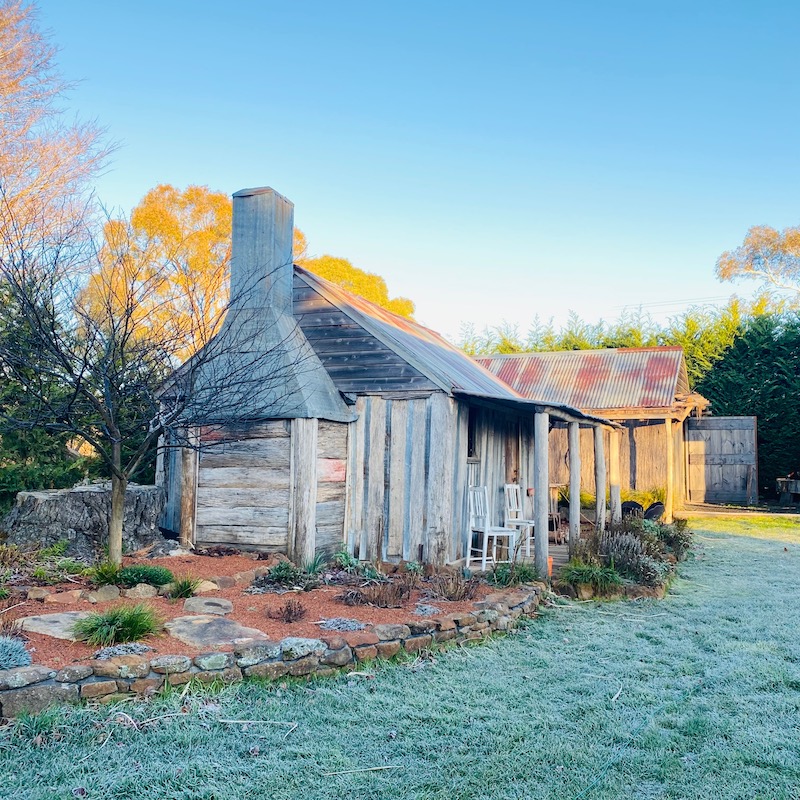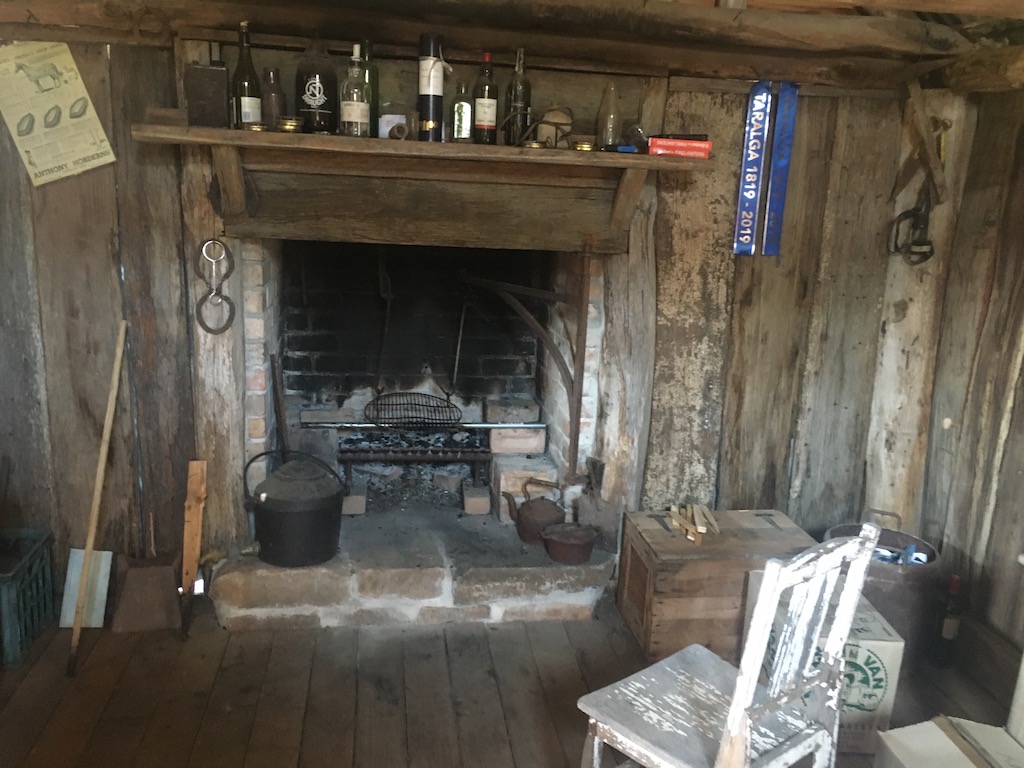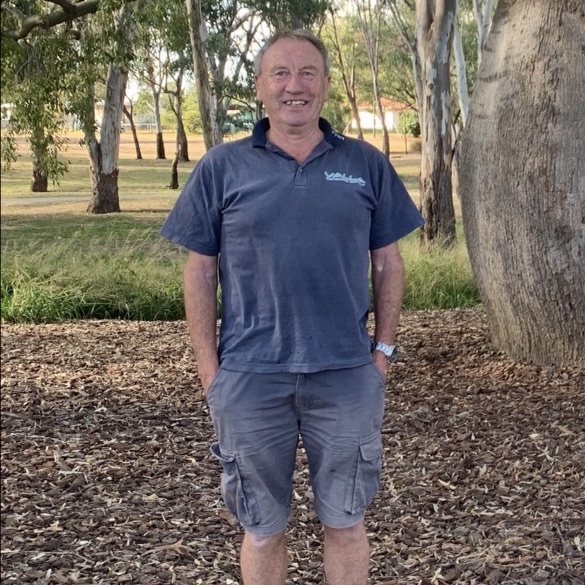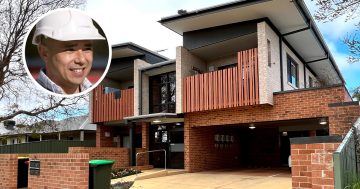
The first hut built on bullock driver Joe Clack’s property. It sat vacant for many years until carpenter Randall Vliestra restored it. Photo: Anita Smedberg.
Giant old pine trees, invasive privet and long grass once covered two old huts in Taralga that most likely would have been bulldozed by any property investor other than Randall Vlietstra.
When the carpenter from Sydney peeled back the corrugated iron covering one of the stringy bark slab hut walls he realised he had acquired a piece of early European history.
Under the crumpled frame of a windmill he found a deep well that he assumed could only have been built by convicts.
“I thought I should throw $100,000 at this, it is worth it for the town and everything,” says Randall, who was in Darwin on a trip around Australia when he bought the Bunnaby Street block for $56,000.
“I just got stuck into it, it became my passion. There were truckloads of trees and rubbish that went out,” he said.
Filled with wrecked furniture, the main hut looked anything but inviting. He lined the interior walls with gyprock and wallpapered them with a pattern similar to the one he found on the original lining boards, which were rotten.
A separate corrugated iron woodshed with laundry tubs and a door made of Queensland kauri timber stood behind the main hut. Randall lined the shed walls and added a walk-in robe that connects the separate shed to the main hut.

Joe Clack built this slab hut for his family which was subsequently occupied by other families, then left vacant for many years. Photo: Anita Smedberg.
From New Zealand originally, Randall came to Sydney in 1977, and more than a decade ago began looking for a block of land on which to build a shed and park his caravan. Subsequently he acquired the Taralga block, and he now lives in the main hut during the warmer months of the year.
He presumes a smaller, older hut belonged to a bullock driver, Joe Clack, who lived there until he built the main hut for his family. In a neighbouring block he found bullock artefacts. Joe was born in 1868 and died in 1932.
In 1894 the Goulburn Evening Penny Post said Joe and his bullocks hauled eight tons of potatoes to Goulburn, on another occasion they delivered 105 bags of potatoes weighing about nine tons.
Taralga Historical Society volunteer Chris Ainsworth provided an extract of a letter from Joe’s daughter, Amy, who said the family had a small farm at Bannaby. Her father’s bullock team hauled bales of wool and timber and he had a small pony, Goldust, on a lead at the back of the team.

The fireplace in the original hut. Photo John Thistleton.
Amy recounted the slab hut’s slate floor and walk-in fireplace with hobs on either side where the children would sit to keep warm.
“A black iron kettle hung above the fire and our mother cooked our meals in a camp oven and black iron saucepans,” Amy wrote.
“What hardship it must have been and washing day must have been an absolute nightmare.
“There was a spring water running creek just down the paddock from the house and our mother (Liza, nee Menzies) would take the washing in kerosene cans to the creek and boil the washing. To my younger sister Marge and me, it was a fun day and we would play and catch tadpoles in jars.”
Amy said Joe was a kind and gentle man. When she wouldn’t eat her vegetables Joe would mash them up to make a cake with a cross on top and when it snowed he would help his daughters make a snowman.
“They say hard work never killed anyone, but it certainly helped in his case,” Amy wrote. “When he died doctors said his body was strained beyond help from heavy lifting.
“I remember when he became too ill to bring his bullock team home. He stopped at ‘Worrigee’ (then owned by Pearces) Bannaby and turned his bullocks out into their property and left his wagon by the roadside and rode Goldust home.”
The bullocky’s wagon was picked up and taken to the Taralga Museum. Joe had died when Amy was only eight.
“These are my childhood memories of a father I loved, and only wish he had lived until I was grown up,” Amy wrote.

Carpenter Randall Vlietstra, who has Dutch ancestry, came from New Zealand to Australia and redeveloped two huts in Taralga. Photo: Supplied.
These days Randall often welcomes people to take a closer look at the two huts. He has also built a guesthouse with old materials to complement the hut and enjoys Taralga’s friendly people.
“I play golf with all the local boys and I’m involved with the historical society,” he said, having turned the huts into a window of the village’s past.








